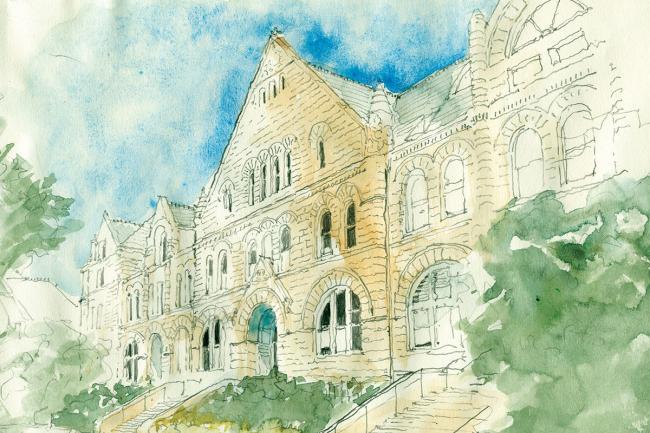Above illustration by Errol Barron.
While in New Orleans for a work conference, I visited my alma mater, Tulane University. I could feel Tulane calling to me as I was attending sessions at the convention center across town. The call was so strong that when my work day ended and I could finally go to the campus, I didn’t even stop at my Airbnb to leave my work bag behind and change shoes (despite the fact that my feet were desperately hurting and despite the fact that this would have only delayed me about 30 minutes, tops). It was like I just had to get there as soon as humanly possible.
Physical places and spaces that were significant in my past are intensely powerful for me to revisit. They “wake up” the version of myself that experienced so much life in those spaces. In the day leading up to this trip, I’d been encountering multiple triggers to past feelings of being constantly afraid and feeling small and lonely when I was in college. I was also returning to New Orleans for the first time in 13 years, so the whole city felt like an emotionally charged time capsule (there’s no place quite like New Orleans)! I don’t think that I’ve ever more strongly recalled how desperately lonely and afraid college-me was, and I don’t think I’ve ever been at a place in my life where I was able to offer that past version of myself so much genuine compassion, love and total understanding. Before, I merely felt frustrated with myself — like, “Ugh, I hate that I felt that way!” — shaming myself for the old struggles. Because of all that, it felt like a sacred calling to get myself as closely intimate with past-me as I could, and wild horses couldn’t have stopped me from getting to that campus.































































